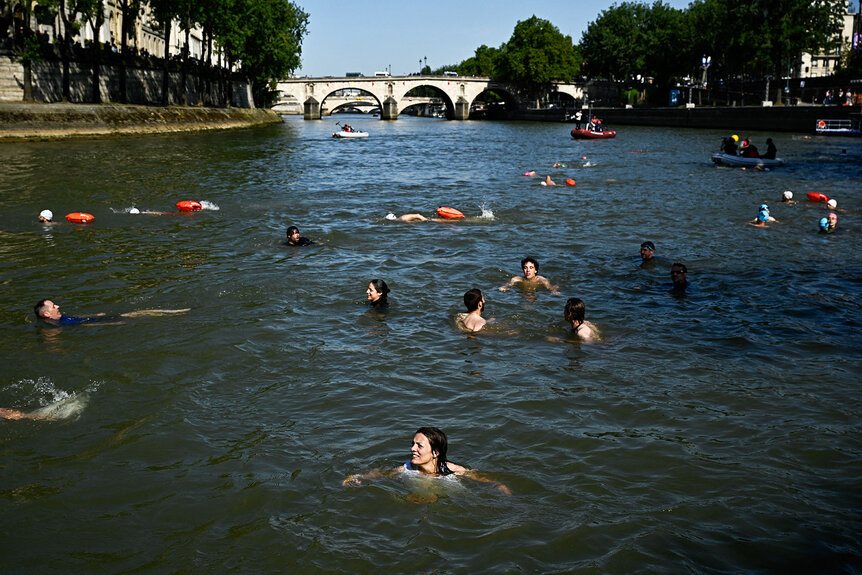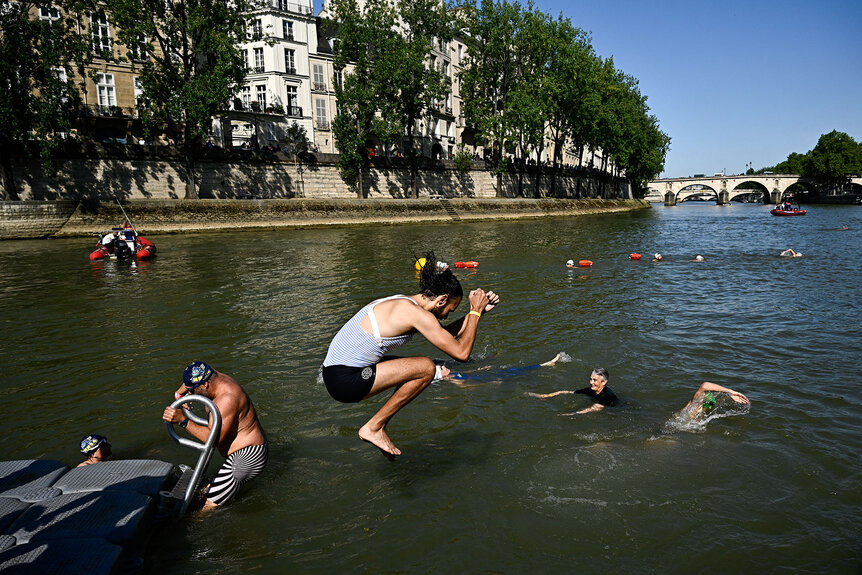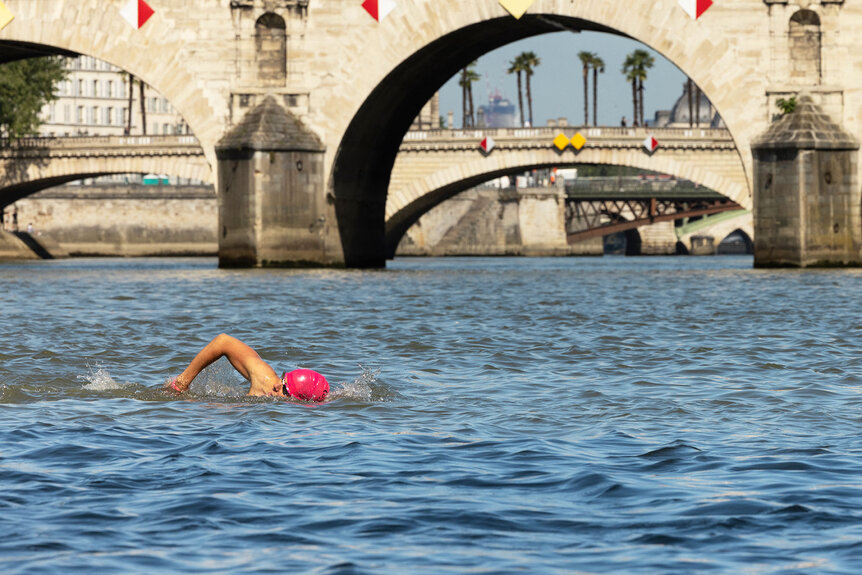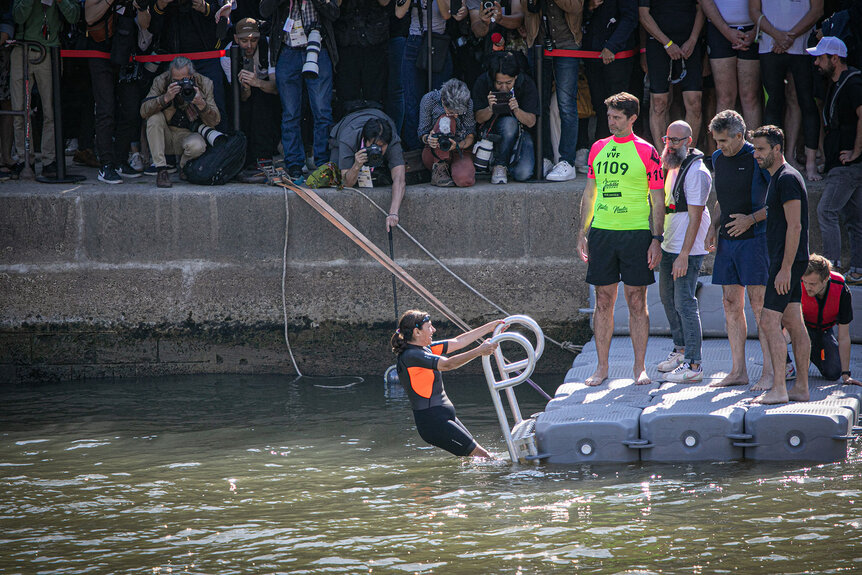Cleaning a River: How Paris Made the Seine Swimmable in Time for the Olympics
Cleaning the Seine has taken $1.5 billion, clever engineering, and decades of hard work.

The Seine is often considered the most romantic river in the world. It spans nearly 500 miles, cutting across northern France and providing an anchor point for cities and scenic destinations. You’ll find the Eiffel Tower, the Cathedral of Notre Dame, The Louvre, and more along its banks in Paris, but until recently you wouldn’t find anyone swimming in its waters, at least not legally. Swimming or bathing in the Seine has been banned since 1923 when the river was deemed unsafe. But all of that is changing thanks to a $1.5 billion project to clean up the Seine in advance of the 2024 Olympic Games in Paris.
For centuries, the river has been a repository for all kinds of human-made runoff and waste. In centuries past, people living along the river discarded everything from animal carcasses to human waste. In the 19th century, an updated sewer system helped to sanitize the city by funneling excess hazardous waste into the river and it’s been that way ever since.
RELATED: Here Are All the U.S. Medal Winners at the 2024 Paris Olympics
Parisian city planners and officials have spent the last few decades working to undo the damage and restore the river to its former glory. While those plans are complex and ongoing, they have succeeded in restoring the river ecosystem, regaining previously lost biodiversity, and making the Seine safe enough for Olympic competitions.
Making the Seine Swimmable for Olympians and Everyone
The Seine served as the primary arena for the Opening Ceremonies of the 2024 Paris Olympics and has been hosting a number of open-water swimming races, including the swimming leg of the triathlon on July 31, 2024.
RELATED: Paris Mayor Anne Hidalgo Swam in the Seine River For an Important Reason
Cleanup efforts go back to the early ‘90s when the European Union passed legislation addressing urban wastewater. The Greater Paris Sanitation Authority got to work updating the sewer system and, by 2015, had announced a plan to make the Seine safely swimmable in time for the Olympics. The cleanup was already in progress but the Games provided an additional incentive to accelerate retrofits of the existing sewer system.
Paris’ sewer system is designed to collect wastewater and rainwater before funneling it through underground channels toward treatment plants. On any ordinary day it works great, but if there’s an especially large downpour the system can become overwhelmed. Rather than letting wastewater gurgle up into the streets, sewer gates are opened and the excess is released into the Seine. Over time, river pollution resulted in low levels of oxygen and high levels of ammonia. Fish and other animals were driven out while dangerous bacteria like E. coli thrived. By the 1970s, about 60% of the city’s sewage was dumped into the river and the total number of fish species had dropped to just three.
The cleanup effort, known officially as the Swimming Plan, focuses on reducing the amount and frequency of wastewater being dumped into the Seine. An incentive and advertising campaign connected tens of thousands of additional residences and houseboats into the sewer system. Those residences were previously dumping all of their wastewater directly into the river.
The city has also built and buried a massive underground rainwater barrel called a cistern. When a heavy rainfall comes through, the cistern can hold the equivalent of 20 Olympic swimming pools (about 13 million gallons) of excess water which can later be funneled to treatment plants instead of into the river. The overall goal is to reduce the amount of wastewater flowing into the river so that bacterial growth remains at or below safe levels.
By the summer of 2023, water safety tests showed the Seine was swimmable about seven days out of every 10. Despite all of the improvements, rainfall can still overwhelm the system and send waste (albeit less waste) into the Seine. The city hopes to open the river to the public at three designated swimming spots (with more planned) by the summer of 2025, though it’s likely that there will be swimming bans following heavy rains.
Olympic officials delayed the swimming leg of the Triathlon on July 30 after rainfall caused bacterial levels to spike. It was postponed to the following day when the river once again passed water safety tests. With any luck, the rest of the swimming events on the Seine will go off without a hitch, but the Olympics are only the beginning. The Seine cleanup project has already restored much of the river’s biological diversity and environmental quality. The number of fish species has recovered from a low of three to a more comfortable 32. Soon, people will join the fish back in the river, for the first time in over a century. Those benefits will continue long after the Olympics are over.


















